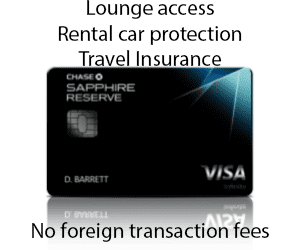Avianca To End Business Class On Domestic Flights, Moves to Economy-Only Seating
This morning, Avianca announced that it will end its business class seating option for domestic flights beginning October 20. The airline, currently working to emerge from Chapter 11 bankruptcy reorganization filed in the US, issued a statement today outlining the plan to move to a single cabin configuration with four fare “sizes” of XS, S, M & L.
For those passengers who have already purchased business class tickets, renamed to XL and XXL, if the aircraft has already had their business class seats removed, Avianca will assign them to the first three rows of the aircraft with the middle seat unavailable.
Now, upgrades, which Avianca will still give out as before, will mean the passenger gets to sit up front. So far, the airline has not announced any removal of business class on international flights.
Analysis
Avianca’s post-bankruptcy strategy seems to be to compete with emerging low-cost carriers like Viva, Spirit and Wingo by becoming one, rather than staying with a full service model such as Copa or Delta, attractive to business travelers.
The airline has already kicked out many of its most loyal fliers from its lounges, changed its redemption model to make it more expensive to attain elite status, and then United Airlines reduced lounge access for Star Alliance travelers including Copa and Avianca. so the question becomes: “Why fly Avianca—an airline that once differentiated itself on service and comfort? An airline that defined itself a few years ago as something of a regional Emirates or Cathay Pacific of the Andes?”
It’s true that business-class domestic didn’t get the passenger much more on the flight itself. All flight segments within Colombia are less than two hours in length. No food was served on Avianca’s previous domestic business class. Passengers essentially got a bigger seat and priority boarding.
Domestic business class was still worth the cost for many frequent business travelers as status with Avianca and the Star Alliance once brought with it upgrades and lounge access the Star Alliance network. When Avianca began to have operational difficulties beginning with the 2017 pilot strike and its aftermath, Avianca would often find hotels for stranded Lifemiles elite passengers while leaving regular customers to sleep overnight on the airport floor.
Still, with business travelers, time is money. The most exquisite lounges in the world (which Avianca does not offer) cannot make up for canceled flights, missed meetings and connections, and unpredictability. Avianca’s previous management led by Germán Efromovich lost control of the company and a new team was brought in, but even months before the COVID pandemic hit, board chairman Roberto Kriete was caught on a leaked video calling Avianca “bankrupt” before the pandemic and flight groundings forced the airline into real, legal bankruptcy.
Most airlines that have tried to be all things to all people have failed. Panamá based Copa does own Colombia-based Wingo but manages it as a separate operation with its own infrastructure, management and marketing. Copa does very well as an all-international airline (with the exception of one domestic route to and from Davíd, Chiriquí), a serviceable—though overcrowded lounge in its Tocumen International Airport home base, and little direct pressure on its routes.
Avianca still flies a few trans-Atlantic flights after filing for bankruptcy, but for Latin American and Caribbean destinations, US travelers who want to stay in Star Alliance can connect to most destinations, even within Colombia through Copa, and Delta passengers now have Latam as a partner. Low-cost travelers, and even business travelers who aren’t beholden to a legacy network can choose from aggressive new low-cost carriers and connecting flights between Colombia and Florida in the US are under 4 hours—short flights where first and business class options are less important to the passenger.
Most airlines know they can’t be all things to all people, and don’t try to. Ryanair doesn’t try to be Emirates, and Spirit doesn’t try to be Delta. Automakers face the same challenge. Mercedes and BMW fared very poorly when they tried to launch economy low-end models. Toyota and Nissan set up separate operations, Lexus and Infiniti in order to move upmarket. The question here is: Is Avianca trying to be Wingo or Viva? It does not have the DNA of a low-cost carrier.
If Avianca wants to be a low-cost carrier, what is its value proposition to customers? Why fly Avianca instead of the real low-cost carriers? Lifemiles no longer gets passengers what they once did. The lower Avianca’s fares, the less Lifemiles the passenger collects (unlike before, when they were based primarily on miles flown), and now, unless passengers are flying on a 1st or business class international ticket, Avianca & Copa status travelers can no longer benefit from many Star Alliance lounges.
In fact, independent lounges not run by an airline are becoming more popular. The Lounge Medellín operates in the José Maria Córdova international airport, open to any passengers that wish to pay admission or join lounge networks like Priority Pass. This option is trending as airline operated lounges have been restricting admission or tightening requirements to members of third-party networks like credit card perk programs or Priority Pass.
Can Avianca successfully reinvent itself as a low-cost carrier? Is there some other strategy that they are implementing? Removing business class from short haul commuter flights is not a big deal by itself. In fact, it makes a lot of sense. But what is Avianca’s strategy? What does the airline want to be, and more importantly, what kind of airline, if any at all, is it capable of being in the future?

























